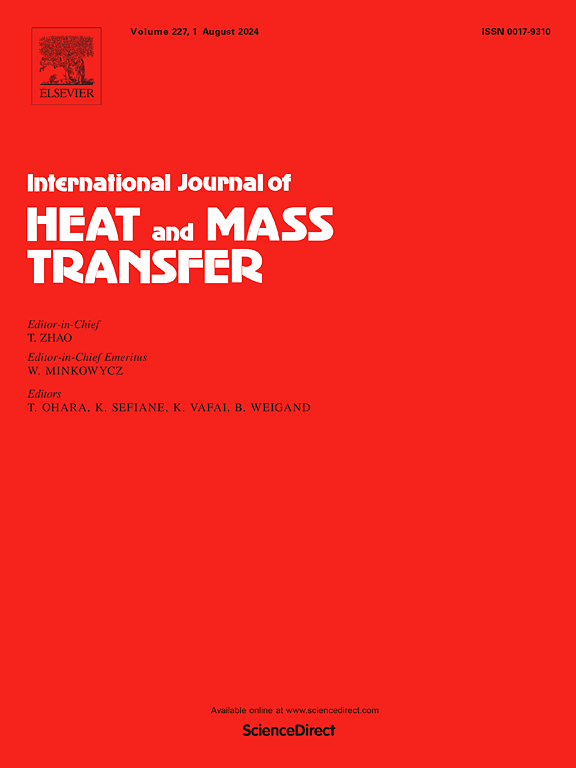Development and assessment of the data-informed continuous machine learning approach based on CHF prediction
IF 5
2区 工程技术
Q1 ENGINEERING, MECHANICAL
International Journal of Heat and Mass Transfer
Pub Date : 2025-07-03
DOI:10.1016/j.ijheatmasstransfer.2025.127474
引用次数: 0
Abstract
Machine learning (ML) method has attracted more and more interests in engineering applications. Despite extensive efforts in the last decades in the application of the ML-method to thermal- and fluid mechanics, there exist in general some obvious shortcomings. Generally, neither sufficient information about the data base used by the previous researchers nor information about the uncertainty (or error) is included in the ML-model and is not available for the next researchers. This makes the continuous learning process difficult or even impossible.
This paper proposes the new data-informed continuous machine learning (DI-CML) approach, to overcome the above shortcomings. The main feature of the DI-CML approach is to generate a machine learning package, which, in addition to the ML-model, contains the distribution functions of the input variables and the distribution function of the uncertainty (error). With this ML-package, an artificial data base can be produced, which should be as similar as possible to the original data base used for the development of the ML-model. This would make the continuous learning process possible and efficient.
The main idea and the procedure of the DI-CML approach is described. The feasibility of the DI-CML approach is assessed by means of CHF prediction. The large CHF data base provided by the OECD-NEA benchmark working group is used. The accuracy of the CHF prediction by the DI-CML approach is analysed by using different features of data base sets, different methods to derive the distribution functions of the input variables as well as different methods for the generation of the artificial data base. The results confirm the good feasibility of the proposed DI-CML approach. Furthermore, challenges and future research needs are also identified.
基于CHF预测的基于数据的连续机器学习方法的开发和评估
机器学习方法在工程应用中受到越来越多的关注。尽管在过去的几十年里,人们在热力学和流体力学的应用上做了大量的努力,但普遍存在一些明显的缺点。一般来说,之前的研究者所使用的数据库信息和不确定性(或误差)信息都没有包含在ml模型中,这对下一个研究者是不可用的。这使得持续的学习过程变得困难甚至不可能。本文提出了一种新的基于数据的连续机器学习(DI-CML)方法来克服上述缺点。DI-CML方法的主要特点是生成一个机器学习包,该包除了ml模型外,还包含输入变量的分布函数和不确定性(误差)的分布函数。使用这个ml包,可以生成一个人工数据库,该数据库应尽可能与用于开发ml模型的原始数据库相似。这将使持续的学习过程成为可能和有效。介绍了DI-CML方法的主要思想和步骤。通过CHF预测来评估DI-CML方法的可行性。使用经合组织- nea基准工作组提供的大型CHF数据库。利用数据库集的不同特征、输入变量分布函数的不同推导方法以及人工数据库的不同生成方法,分析了DI-CML方法预测CHF的精度。结果证实了所提出的DI-CML方法的良好可行性。此外,还确定了挑战和未来的研究需求。
本文章由计算机程序翻译,如有差异,请以英文原文为准。
求助全文
约1分钟内获得全文
求助全文
来源期刊
CiteScore
10.30
自引率
13.50%
发文量
1319
审稿时长
41 days
期刊介绍:
International Journal of Heat and Mass Transfer is the vehicle for the exchange of basic ideas in heat and mass transfer between research workers and engineers throughout the world. It focuses on both analytical and experimental research, with an emphasis on contributions which increase the basic understanding of transfer processes and their application to engineering problems.
Topics include:
-New methods of measuring and/or correlating transport-property data
-Energy engineering
-Environmental applications of heat and/or mass transfer

 求助内容:
求助内容: 应助结果提醒方式:
应助结果提醒方式:


